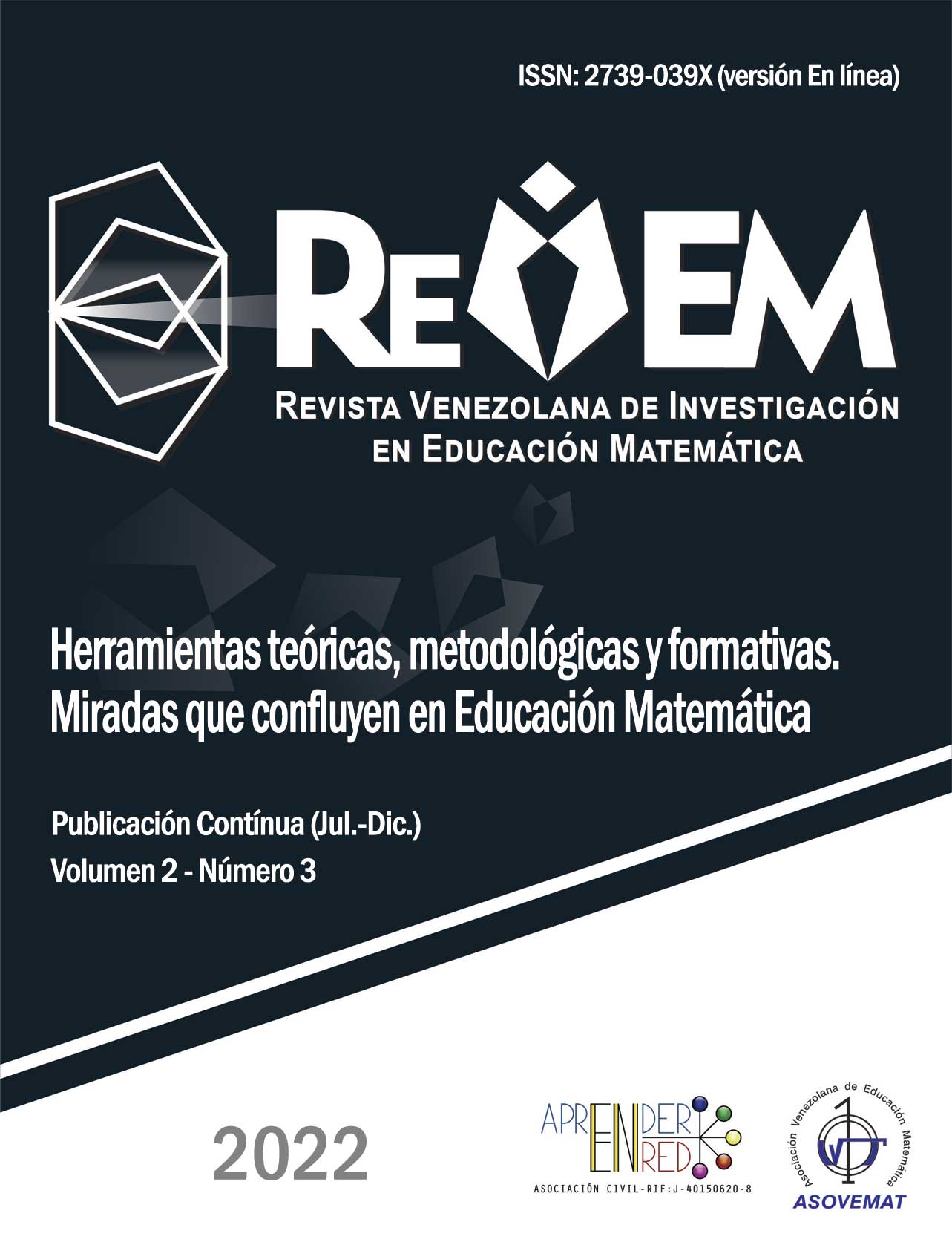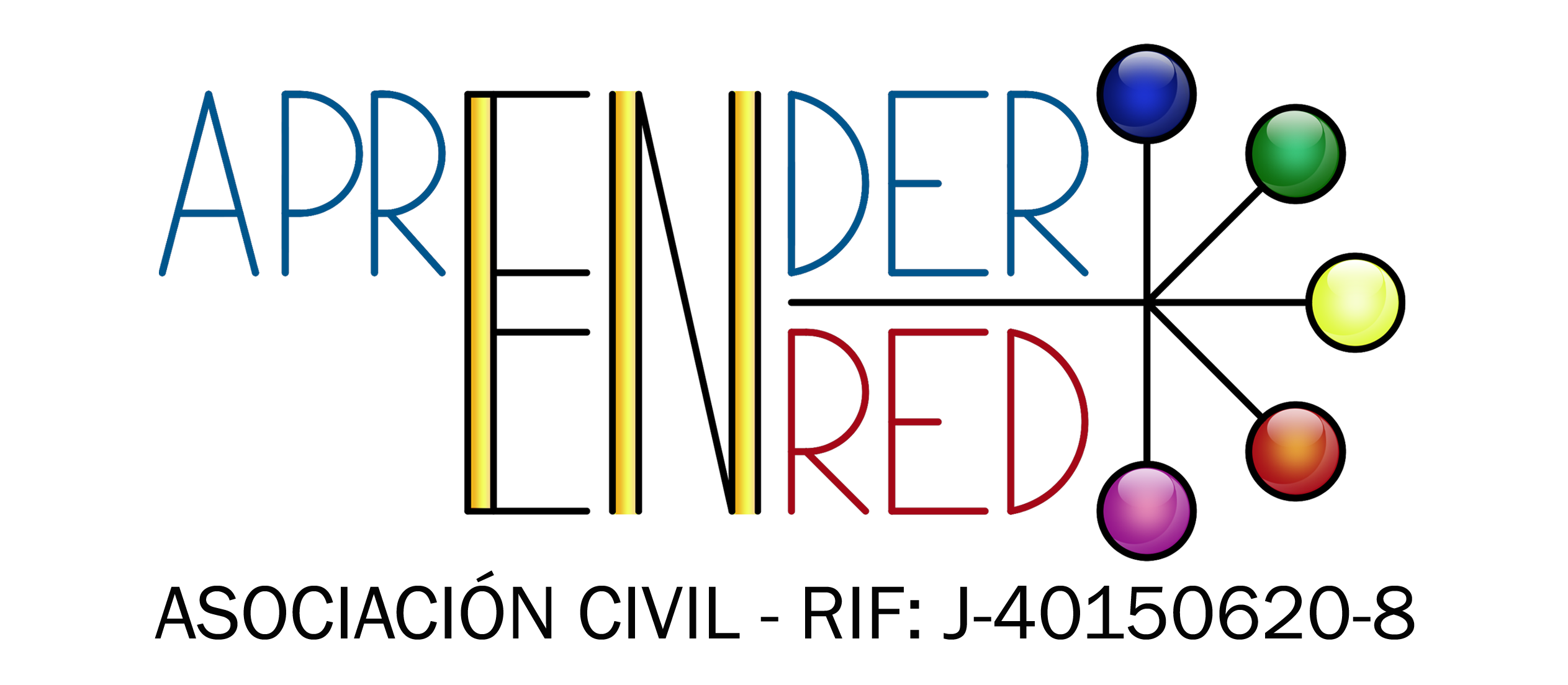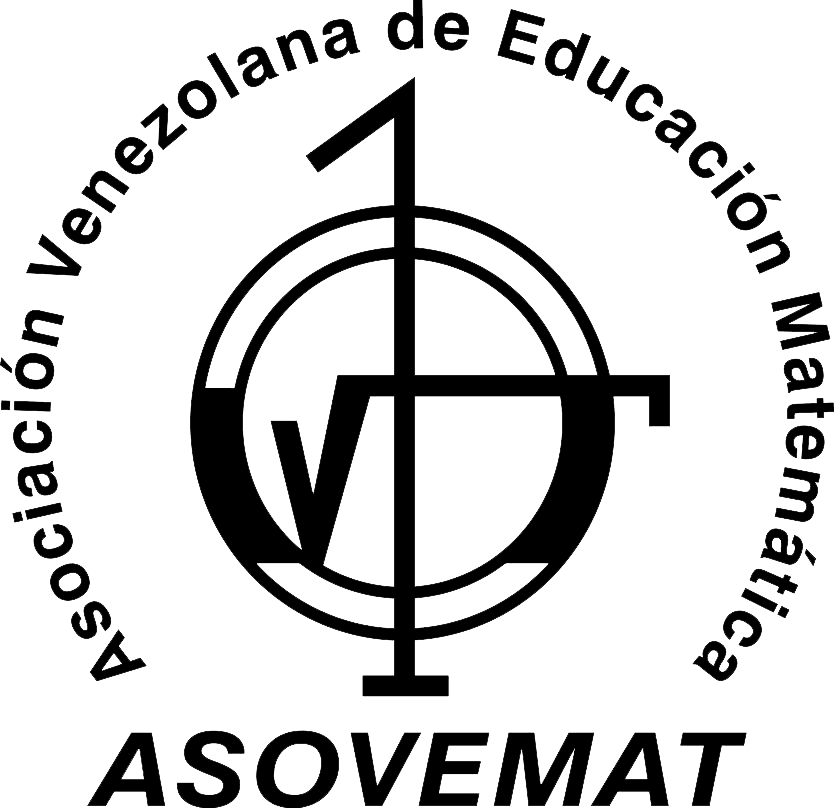La competencia mirar profesionalmente de futuros profesores de matemáticas: uso de representaciones de la práctica
DOI:
https://doi.org/10.54541/reviem.v2i3.56Palabras clave:
Mirar profesionalmente, Competencia docente, Representaciones de la prácticaResumen
Mirar profesionalmente las situaciones de enseñanza-aprendizaje de las matemáticas implica que el profesorado sea capaz de identificar aspectos relevantes en una situación, usar su conocimiento para interpretarlos y decidir cómo continuar en la enseñanza. Esta competencia ha sido identificada como una de las competencias importantes a desarrollar en los programas de formación de profesorado de educación infantil, primaria y secundaria. El Grupo de Investigación en Didáctica de las Matemáticas de la Universidad de Alicante (GIDIMAT-UA) ha contribuido a esta agenda de investigación y ha aportado características del desarrollo de esta competencia y de los entornos de aprendizaje que apoyan su desarrollo. Una de las características de los entornos de aprendizaje es el uso de representaciones de la práctica (viñetas) que proporcionan contextos reales para interpretar aspectos de la enseñanza y aprendizaje de las matemáticas y, por consiguiente, proporcionan oportunidades para relacionar las ideas teóricas con ejemplos de la práctica. Se presentan ejemplos de viñetas que forman parte de los entornos de aprendizaje de los programas de formación de profesores y que tienen el objetivo de desarrollar esta competencia. Además, se presentan algunos resultados que muestran características de cómo se desarrolla esta competencia.
Descargas
Métricas
Citas
Barnhart, T., & van Es, E. (2015). Studying teacher noticing: examining the relationship among pre-service science teachers' ability to attend, analyze and respond to student thinking. Teaching and Teacher Education, 45, 83-93. https://doi.org/10.1016/j.tate.2014.09.005
Brown, J. S., Collins, A., & Duguid, P. (1989). Situated cognition and the culture of learning. Educational Researcher, 18(1), 32-42. https://doi.org/10.3102/0013189X018001032
Brown, L., Fernández, C., Helliwell, T., & Llinares, S. (2020). Prospective mathematics teachers as learners in university and school contexts. From university-based activities to classroom practice. En G. M. Lloyd, & O. Chapman (Eds.), International Handbook of Mathematics Teachers Education: Volume 3. Participants in Mathematics Teacher Education (pp. 343-366). Koninklijke Brill NV. https://doi.org/10.1163/9789004419230_014
Buchbinder, O., & Kuntze, S. (Eds.) (2018). Mathematics teachers engaging with representations of practice. A dynamically evolving field (ICME-13 Monographs). Springer. https://doi.org/10.1007/978-3-319-70594-1
Buforn, A., Llinares, S., Fernández, C., Coles, A., & Brown, L. (2022). Pre-service teachers’ knowledge of the unitizing process in recognizing students’ reasoning to propose teaching decisions. International Journal of Mathematical Education in Science and Technology, 53(2), 425-443. https://doi.org/10.1080/0020739X.2020.1777333
Design-Based Research Collective (2003). The Design-Based Research: an emerging paradigm for educational inquiry. Educational Researcher, 32(1), 5-8. https://doi.org/10.3102/0013189X032001005
Dick, L. K. (2017). Investigating the relationship between professional noticing and specialized content knowledge. En E. O. Schack, M. H. Fisher, & J. A. Wilhelm (Eds.), Teacher Noticing: Bridging and Broadening Perspectives, Contexts and Frameworks (pp. 445-466). Springer. https://doi.org/10.1007/978-3-319-46753-5_20
Dindyal, J., Schack, E. O., Choy, B. H., & Sherin, M. G. (2021). Exploring the terrains of mathematics teacher noticing. ZDM Mathematics Education, 53, 1-16. https://doi.org/10.1007/s11858-021-01249-y
Fernández, C. (2021). Apoyando el desarrollo de la competencia mirar profesionalmente del futuro profesorado de matemáticas: práctica e investigación. Realidad y Reflexión, 53, 40-60. https://doi.org/10.5377/ryr.v53i53.10887
Fernández, C., & Choy, B. H. (2019). Theoretical lenses to develop mathematics teacher noticing. Learning, teaching, psychological, and social perspectives. En S. Llinares, & O. Chapman (Eds.), International Handbook of Mathematics Teacher Education: Volume 2. Tools and Processes in Mathematics Teacher Education (Second Edition) (pp. 337-360). Brill/Sense. https://doi.org/10.1163/9789004418967_013
Fernández, C., Llinares, S., & Rojas, Y. (2020). Prospective mathematics teachers’ development of noticing in an online teacher education program. ZDM Mathematics Education, 52, 959-972. https://doi.org/10.1007/s11858-020-01149-7
Fernández, C., Llinares, S., & Valls, J. (2012). Learning to notice students’ mathematical thinking through on-line discussions. ZDM Mathematics Education, 44, 747-759. https://doi.org/10.1007/s11858-012-0425-y
Fernández, C., Sánchez-Matamoros, G., Moreno, M., & Callejo, M. L. (2018). La coordinación de las aproximaciones en la comprensión del concepto de límite cuando los estudiantes para profesor anticipan respuestas de estudiantes. Enseñanza de las Ciencias. Revista de Investigación y Experiencias Didácticas, 36, 143-162. https://doi.org/10.5565/rev/ensciencias.2291
Fernández, C., Sánchez-Matamoros, G., Valls, J., & Callejo, M. L. (2018). Noticing students’ mathematical thinking: characterization, development and contexts. Avances de Investigación en Educación Matemática (AIEM), 13, 39-61. https://doi.org/10.35763/aiem.v0i13.229
Friesen, M., & Kuntze, S. (2018). Competence assessment with representations of practice in text, comic and video format. En O. Buchbinder, & S. Kuntze (Eds.), Mathematics teachers engaging with representations of practice. A dynamically evolving field (pp. 113-130). Springer. https://doi.org/10.1007/978-3-319-70594-1_7
González-Forte, J. M., Fernández, C., Van Hoof, J., & Van Dooren, W. (2020). Various ways to determine rational number size: an exploration across primary and secondary education. European Journal of Psychology of Education, 35, 549-565. https://doi.org/10.1007/s10212-019-00440-w
González-Forte, J. M., Fernández, C., Van-Hoof, J., & Van Dooren, W. (2022). Incorrect ways of thinking about the size of fractions. International Journal of Science and Mathematics Education. https://doi.org/10.1007/s10763-022-10338-7
Ivars, P., & Fernández, C. (2018). The role of writing narratives in developing pre-service elementary teachers’ noticing. En G. J. Stylianides, & K. Hino (Eds.), Research Advances in the mathematical Education of Preservice Elementary Teachers. ICME-13 Monographs (pp. 245-259) Springer. London. https://doi.org/10.1007/978-3-319-68342-3_17
Ivars, P., Fernández, C., Llinares, S., & Choy, B. H. (2018). Enhancing noticing: using a hypothetical learning trajectory to improve pre-service primary teachers’ professional discourse. EURASIA. Journal of Mathematics, Science and Technology Education, 14(11), em1599. https://doi.org/10.29333/ejmste/93421
Jacobs, V. R., & Spangler, D. A. (2017). Research on core practices in K-12 mathematics teaching. En J. Cai (Ed.), Compendium for Research in Mathematics Education (pp. 766-792). National Council of Teachers of Mathematics.
Linares, S. (2002). La práctica de enseñar y aprender a enseñar matemáticas: la generación y uso de instrumentos de la práctica. Revista de Enseñanza Universitaria, 19, 115-124.
Llinares, S. (2013). Professional noticing: a component of the mathematics teacher’s professional practice. Sisyphus - Journal of Education, 1(3), 76-93.
Llinares, S. (2019). Indicators for the development of noticing: how do we recognize them? For the Learning of Mathematics, 1, 38-43.
Llinares, S., & Fernández, C. (2021). Mirar profesionalmente la enseñanza de las matemáticas: características de una agenda de investigación en Didáctica de la Matemática. La Gaceta de la RSME, 24(1), 185-205.
Llinares, S., Fernández, C., & Sánchez-Matamoros, G. (2016). Changes in how prospective teachers anticipate secondary students’ answers. Eurasia Journal of Mathematics, Science and Technology Education, 12(8), 2155-2170. https://doi.org/10.12973/eurasia.2016.1295a
Magiera, M., van den Kieboom, L., & Moyer, J. (2013). An exploratory study of preservice middle school teachers’ knowledge of algebraic thinking. Educational Studies in Mathematics, 84, 93-113. https://doi.org/10.1007/s10649-013-9472-8
Mason, J. (2002). Researching your own practice: the discipline of noticing. Routledge/Falmer. https://doi.org/10.4324/9780203471876
Sánchez-Matamoros, G., Fernández, C., & Llinares, S. (2019). Relationships among prospective secondary mathematic teachers' skills of attending, interpreting and responding to students' understanding. Educational Studies in Mathematics, 100, 83-99. https://doi.org/10.1007/s10649-018-9855-y
Sánchez-Matamoros, G., Moreno, M., Pérez-Tyteca, P., & Callejo, M. L. (2018). Trayectoria de aprendizaje de la longitud y su medida como instrumento conceptual usado por futuros maestros de educación infantil. Revista Latinoamericana de Investigación en Matemática Educativa, 21(2), 203-228. https://doi.org/10.12802/relime.18.2124
Schack, E., Fisher, M., Thomas, J., Eisenhardt, S., Tassell, J., & Yoder, M. (2013). Prospective elementary school teachers’ professional noticing of children’s early numeracy. Journal of Mathematics Teacher Education, 16, 379-397. https://doi.org/10.1007/s10857-013-9240-9
Son, J. (2013). How preservice teachers interpret and respond to student errors: ratio and proportion in similar rectangles. Educational Studies in Mathematics, 84, 49-70. https://doi.org/10.1007/s10649-013-9475-5
Stahnke, R., Schueler, S., & Roesken-Winter, B. (2016). Teachers’ perception, interpretation, and decision-making: a systematic review of empirical mathematics education research. ZDM Mathematics Education, 48(1-2), 1-27. https://doi.org/10.1007/s11858-016-0775-y
Thomas, J., Jong, C., Fisher, M. H., & Schack, E. O. (2017). Noticing and knowledge. Exploring theoretical connections between profesional noticing and mathematical knowledge for teaching. The Mathematics Educator, 26, 3-25.
Descargas
Publicado
Cómo citar
Número
Sección
Licencia
Derechos de autor 2022 Ceneida Fernández, Juan Manuel González-Forte, Pedro Ivars

Esta obra está bajo una licencia internacional Creative Commons Atribución 4.0.
Los autores/as que publiquen en esta revista aceptan las siguientes condiciones:
- Los autores/as conservan los derechos de autor y ceden a la revista el derecho de la primera publicación, con el trabajo registrado bajo la licencia de atribución de Creative Commons 4.0, que permite a terceros utilizar lo publicado siempre que mencionen la autoría del trabajo y a la primera publicación en esta revista.
- Los autores/as pueden realizar otros acuerdos contractuales independientes y adicionales para la distribución no exclusiva de la versión del artículo publicado en esta revista (p. ej., incluirlo en un repositorio institucional o publicarlo en un libro), siempre que indiquen claramente que el trabajo se publicó por primera vez en esta revista.
- Se permite y recomienda a los autores/as compartir su trabajo en línea (p. ej., en repositorios institucionales o páginas web personales) antes y durante el proceso de envío del manuscrito, ya que esto puede conducir a intercambios productivos, a una mayor y más rápida citación del trabajo publicado.














